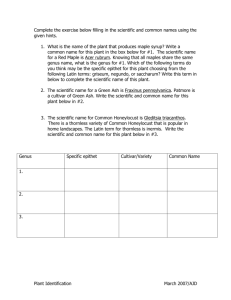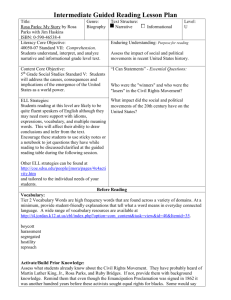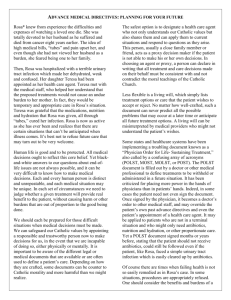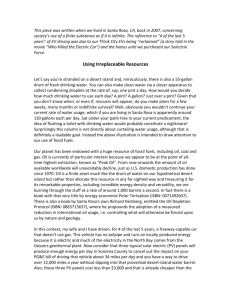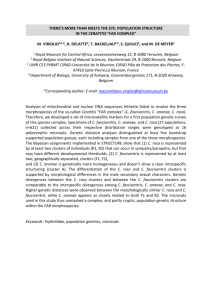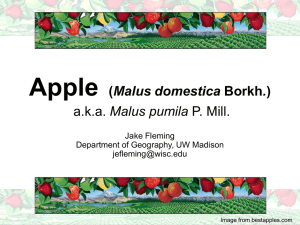Answers to Nomenclature Homework
advertisement
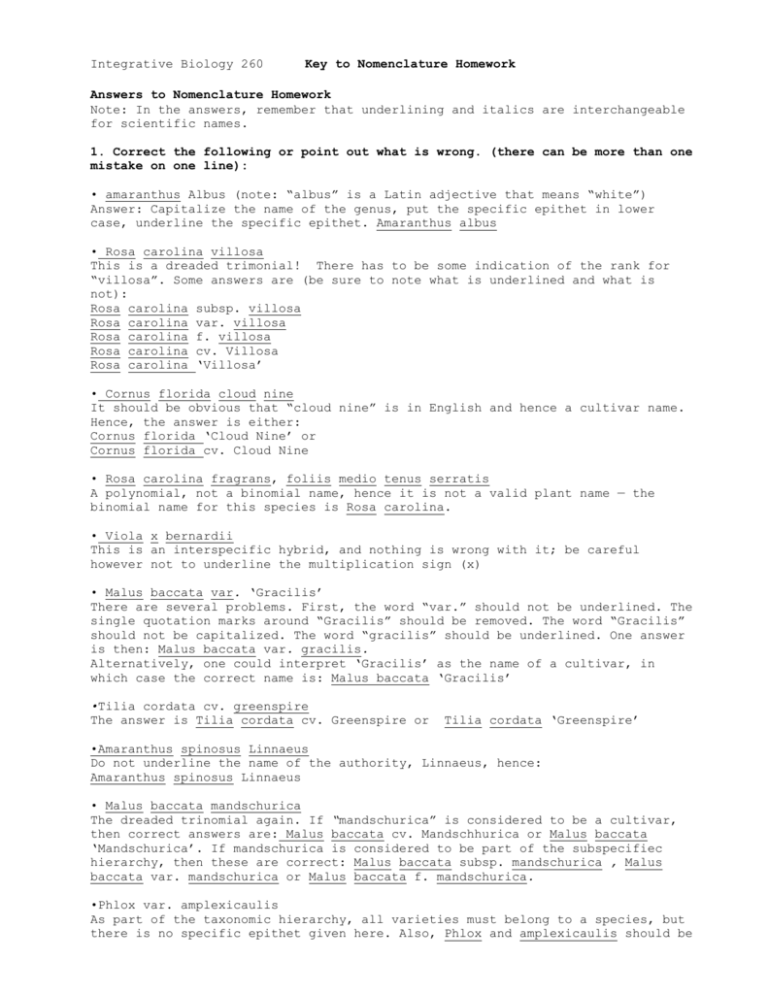
Integrative Biology 260 Key to Nomenclature Homework Answers to Nomenclature Homework Note: In the answers, remember that underlining and italics are interchangeable for scientific names. 1. Correct the following or point out what is wrong. (there can be more than one mistake on one line): • amaranthus Albus (note: “albus” is a Latin adjective that means “white”) Answer: Capitalize the name of the genus, put the specific epithet in lower case, underline the specific epithet. Amaranthus albus • Rosa carolina villosa This is a dreaded trimonial! There has to be some indication of the rank for “villosa”. Some answers are (be sure to note what is underlined and what is not): Rosa carolina subsp. villosa Rosa carolina var. villosa Rosa carolina f. villosa Rosa carolina cv. Villosa Rosa carolina ‘Villosa’ • Cornus florida cloud nine It should be obvious that “cloud nine” is in English and hence a cultivar name. Hence, the answer is either: Cornus florida ‘Cloud Nine’ or Cornus florida cv. Cloud Nine • Rosa carolina fragrans, foliis medio tenus serratis A polynomial, not a binomial name, hence it is not a valid plant name — the binomial name for this species is Rosa carolina. • Viola x bernardii This is an interspecific hybrid, and nothing is wrong with it; be careful however not to underline the multiplication sign (x) • Malus baccata var. ‘Gracilis’ There are several problems. First, the word “var.” should not be underlined. The single quotation marks around “Gracilis” should be removed. The word “Gracilis” should not be capitalized. The word “gracilis” should be underlined. One answer is then: Malus baccata var. gracilis. Alternatively, one could interpret ‘Gracilis’ as the name of a cultivar, in which case the correct name is: Malus baccata ‘Gracilis’ •Tilia cordata cv. greenspire The answer is Tilia cordata cv. Greenspire or Tilia cordata ‘Greenspire’ •Amaranthus spinosus Linnaeus Do not underline the name of the authority, Linnaeus, hence: Amaranthus spinosus Linnaeus • Malus baccata mandschurica The dreaded trinomial again. If “mandschurica” is considered to be a cultivar, then correct answers are: Malus baccata cv. Mandschhurica or Malus baccata ‘Mandschurica’. If mandschurica is considered to be part of the subspecifiec hierarchy, then these are correct: Malus baccata subsp. mandschurica , Malus baccata var. mandschurica or Malus baccata f. mandschurica. •Phlox var. amplexicaulis As part of the taxonomic hierarchy, all varieties must belong to a species, but there is no specific epithet given here. Also, Phlox and amplexicaulis should be underlined. • Quercus alba x Q. macrocarpa = Q. x bebbiana The answer is : Quercus x bebbiana [Note that the "x" should be a multiplication sign. •Gleditsia triacanthos Sunburst The word “Sunburst” is in English, thus it is a cultivar name. Thus correct answers are: Gleditsia triacanthos ‘Sunburst’ or Gleditsia triacanthos cv. Sunburst. 2. The scientific name The word “Magnolia” is The word “grandiflora” The word “Linnaeus” is of a species is Magnolia grandiflora Linnaeus. the genus is the specific epithet the authority 3. True or false: Magnoliaceae is the name of an order — FALSE, Magnoliaceae is the name of a family Liliopsida is the name of a division — FALSE, Liliopsida is the name of a class The plural of “genus” is “genera” — TRUE The singular of “species” is “specie” — FALSE, never-ever use “specie” in biology! The pronunciation of Aloe (as the name of a genus) is al-o — FALSE, see Observing, Photographing, and Collecting Plants, page 18; Latin does not have silent last letters. 4. Apple ‘Macintosh’ is the name of a computer as well as the common name of a cultivar of apples that we often eat. All apples belong to the genus Malus, the specific epithet of most cultivated applies is pumila. So what is the scientific name of the Macintosh apple? The answer is: Malus pumila cv. Macintosh or Malus pumila ‘Macintosh’ 5. The name of the genus for a group of plants we commonly call “redbuds” is Cercis . It belongs to the family Fabaceae. Linnaeus gave the specific epithet of canadensis to the native redbud that occurs here in Illinois. What is the complete scientific name of this species? The answer is: Cercis canadensis Linnaeus 6. Most redbud trees belonging to the species in question 5 have green leaves. However, some trees in cultivation have leaves that are purple throughout the growing season, and these are given the cultivar name of ‘Forest Pansy’. Write out the two correct ways of the scientific name of this cultivar. The answer is: Cercis canadensis cv. Forest Pansy or Cercis canadensis ‘Forest Pansy’ 7. Most redbud trees have dark pink/mauve flowers. In Missouri, a few trees occur in the wild that have white flowers; this color form has been propagated and the plants are also in cultivation. Alfred Rehder described these whiteflowered plants as a botanical form, using the epithet of alba. What is the complete scientific name of the white-flowered redbud? The answer is: Cercis canadensis forma alba [or Cercis canadensis Linnaeus forma alba Rehder] 8. Species often get described more than one time. All of the following names are synonyms; that is they all refer to what we consider today to be the same species. What is the correct name for the following species of Rosa ? R. intermedia Carrière, 1868 R. multiflora Thunberg, 1784 R. polyantha Siebold & Zuccarini, 1843 R. thrysiflora Déséglise, 1876 R. thunbergii Trattinnick, 1823 The oldest name is the correct on, Rosa multiflora Thunberg. 9. The genus Rosa belongs to a family, order, and subclass that are based on the stem of the genus (Ros-). It is also a dicot and a flowering plant. Write out a hierarchial classification for this situation, using proper endings (suffixes). Then add the species Rosa carolina to the hierarchy. Magnoliophyta Magnoliopsida Rosoideae Rosales Rosaceae Rosa carolina



